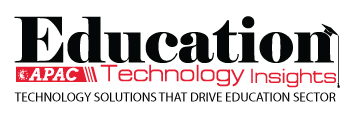THANK YOU FOR SUBSCRIBING
Be first to read the latest tech news, Industry Leader's Insights, and CIO interviews of medium and large enterprises exclusively from Education Technology Insights
What to Expect from Students after a Pandemic School Year
Eva Harvell, Director of Information Systems, Pascagoula-Gautier School District
 Eva Harvell, Director of Information Systems, Pascagoula-Gautier School District
Eva Harvell, Director of Information Systems, Pascagoula-Gautier School DistrictMarch 13, 2020 is the day that forever changed the face of education. Since that Friday, school districts have pushed to make long range plans happen a lot quicker and navigate through the onslaught of digital programs and resources that were presented to teachers, administrators, students, and parents. As we work to close out this school year, with signs of normalcy on the horizon, school districts need to take time to reflect on where they are and visualize where they want to go for 2022-2023 and beyond.
My reflection will focus on three key topics: the applications we use, our intentions for those applications, and digital citizenship.
With district, school, and teacher purchased applications, the sheer number available to an educator or student can become quite overwhelming. On top of the number of applications available, the level of security and effectiveness will vary. Districts should first work to create a thorough inventory of the applications available for your district. Ask yourself the following questions to help take a hard look at each application:
1) What is the goal for this application?
2) Has the goal been met for this application?
3) Is there another application that will meet or exceed the goal and better align with the district?
4) Does the application’s data privacy meet or exceed the district’s expectations?
As these questions are answered and the list of applications and programs become more focused, you can move onto the next topic, intentions. Districts, at some point between 2020 and now, had applications and programs being used “just because”. We can no longer have “just because” occurring in our classrooms. Districts must set intentions and expectations for how and why applications and programs are used in the classroom. These intentions and expectations should take into consideration the time or usage spent, providing balance, and available training and resources.
“Districts must set intentions and expectations for how and why applications and programs are used in the classroom”
The third topic for reflection should focus on digital citizenship. A basic understanding of digital citizenship for students, teachers, and parents is a must. Students cannot use a tool to collaborate and share ideas if they do not have a basic understanding of digital communication and digital etiquette. Parents need to have a basic understanding of digital health and wellness, to understand the warning signs of technology over use. Teachers will have a more difficult time navigating and preparing students for college and career without knowing the ins and outs of digital citizenship. Just like with applications and programs, you want to have goals, intentions, and expectations for what digital citizenship will look and feel like in a district.
If school districts will reflect on those three topics, the 2022-2023 school year and beyond can take the best parts of what was thrown our way after March 13, 2020 and build back even better toward a sense of normalcy in the classroom.
Read Also
Beyond Administration: How a School Management System Transforms Learning Communities
Empowering Educators through Purposeful, Connected and Transformative Learning
Empowering Students to Lead: A New Vision for Civic Learning
The Director's Playbook: Strategic Digital Transformation in Rual Hyper-Growth Districts
The Art and Architecture of Student Support
From At-Risk to At-Promise: The Language Revolution Higher Education Needs

I agree We use cookies on this website to enhance your user experience. By clicking any link on this page you are giving your consent for us to set cookies. More info






















